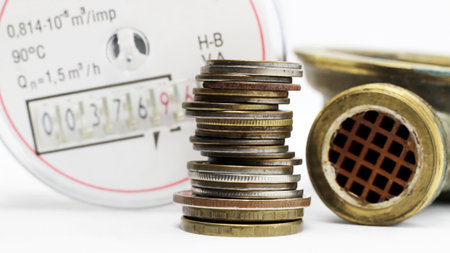Introduction to Rare Collectables in Britain
The world of rare collectables holds a distinctive place in British culture, shaped by centuries of tradition and an enduring fascination with history and craftsmanship. In the UK, rare collectables encompass a wide variety of items—ranging from vintage coins, classic stamps, and antique furniture to limited-edition toys, rare books, and iconic memorabilia. Each category carries its own unique heritage and value, reflecting the diverse interests of British collectors across generations. The allure of collecting in Britain goes beyond mere acquisition; it is often about preserving a tangible connection to the past, celebrating national identity, or seeking the thrill of discovery in local markets and renowned auction houses. This passion for rare collectables remains resilient even as modern trends and technologies reshape how enthusiasts source, authenticate, and trade their prized finds. As we explore the current landscape, it becomes clear that the British appetite for rare collectables continues to thrive—driven by a blend of nostalgia, investment potential, and a deep-seated appreciation for the stories these objects embody.
2. Current Trends in the British Collectables Market
Understanding the landscape of rare collectables in Britain requires both a historical perspective and an appreciation for emerging tastes. The British market uniquely blends nostalgia-driven collecting with a growing appetite for contemporary limited editions, reflecting shifting cultural influences and economic factors.
Vintage Memorabilia: A Persistent Favourite
British collectors have long shown a strong affinity for vintage memorabilia, particularly items linked to national heritage. Classic toys, royal family memorabilia, football programmes, and wartime artefacts remain staples in auction houses and specialist fairs across the UK. Interest is sustained by emotional connections to the past as well as the perceived investment value of these objects.
Table 1: Popular Categories of Vintage Collectables in Britain
| Category | Example Items | Main Buyer Demographic |
|---|---|---|
| Toys & Games | Dinky cars, Hornby trains | Adults aged 35-60 |
| Royal Memorabilia | Coronation mugs, commemorative plates | Collectors of all ages |
| Sports Programmes | FA Cup finals, Six Nations rugby matches | Male collectors 40+ |
| Wartime Artefacts | Medals, ration books | History enthusiasts, museums |
Contemporary Limited Editions: New Frontiers for Collectors
The last decade has witnessed a surge in demand for modern limited-edition collectables. British preferences are visible in sectors such as art prints, designer toys, and even exclusive sneaker releases. The appeal lies in both scarcity and the influence of celebrity or artist collaborations. Notably, sustainability and social consciousness now play a part, with younger buyers seeking items that reflect current values.
Table 2: Emerging Contemporary Collectables Sought After in Britain
| Type | Description | Key Appeal Factors |
|---|---|---|
| Art Prints & Editions | Banksy prints, Grayson Perry ceramics | Cultural cachet, resale potential |
| Sneakers & Streetwear | Nike collaborations, Palace Skateboards releases | Lifestyle branding, rarity |
| Designer Toys & Figurines | Kaws figures, Medicom Bearbricks (UK exclusives) | Crossover with art scene, collectable runs |
| Sustainable Collectables | Upcycled furniture, eco-friendly art pieces | Environmental impact, ethical sourcing |
The Influence of Technology and Community Trends
The rise of online platforms has significantly broadened access to both traditional and modern collectables. British collectors increasingly use digital marketplaces and social networks to connect, trade, and share expertise. This shift is fostering new micro-communities around niche interests—from vintage vinyl records to NFT art—reflecting a dynamic interplay between tradition and innovation within the UK’s collectables scene.

3. Key Factors Driving Demand in the UK
The British collectables market is shaped by a unique interplay of economic, cultural, and social dynamics. To truly understand what fuels the nation’s fascination with rare items, it’s necessary to dissect these driving forces. Economically, Britain has long had a robust secondary market for antiques and collectables, supported by established auction houses and a strong network of specialist dealers. Even during periods of uncertainty—such as Brexit or inflationary pressures—collectables often act as alternative assets, providing both emotional satisfaction and potential financial resilience.
Culturally, the UK’s deep-seated appreciation for history and heritage plays a pivotal role. Collecting is more than just an investment here; it’s a way to preserve tangible links to the past, whether through Victorian stamps, wartime memorabilia, or iconic pop culture artefacts from The Beatles era. This reverence for provenance and storytelling helps explain why British collectors are especially discerning about authenticity and historical context.
On the social front, there’s a distinct sense of community among UK collectors. Local fairs, societies, and online forums foster knowledge-sharing and camaraderie. The rise of digital platforms has made participation more accessible, but in-person events such as antiques roadshows still remain integral to the experience. Inter-generational collecting traditions also play their part: many people inherit their passion—and sometimes entire collections—from relatives, perpetuating demand across decades.
Collectively, these factors create a marketplace that is both resilient and adaptive, able to weather economic storms while evolving alongside shifts in taste and technology. For anyone seeking to navigate Britain’s world of rare collectables, recognising these key drivers is essential to understanding current trends and anticipating future opportunities.
4. Noteworthy Collectable Categories
The British collectables market is as diverse as the nation’s history, with certain categories consistently attracting both seasoned collectors and curious newcomers. Understanding which items hold enduring appeal or are rising in popularity can help enthusiasts navigate this fascinating landscape.
Popular Collectable Items in Britain
From royal memorabilia to rare football shirts, some categories have become household names. The table below highlights several of the most sought-after collectables across the UK:
| Category | Description | Current Trends |
|---|---|---|
| Stamps | British stamps, especially those from early reigns or commemorative issues, remain a cornerstone for collectors. | Interest in classic and misprinted stamps; growth in online trading platforms. |
| Coins | From pre-decimal pennies to special Royal Mint releases, coins reflect the country’s economic and royal history. | Commemorative coins gaining traction; focus on limited editions. |
| Luxury Watches | Brands like Rolex and Omega are particularly prized, often seen as both investments and status symbols. | Vintage models and limited releases highly sought after; increased attention to provenance. |
| Football Memorabilia | Signed shirts, historic match programmes, and unique club items celebrate Britain’s football legacy. | Items linked to famous matches or legendary players command premium prices. |
| Antiques | Furniture, ceramics, and art pieces from Georgian, Victorian, or Edwardian periods capture British heritage. | Sustainable collecting and restoration gaining popularity; provenance documentation important. |
A Closer Look at British Trends
The appetite for collectables in Britain is shaped by nostalgia, investment potential, and cultural pride. For example, post-war coins or Queen Victoria stamps not only represent tangible links to the past but also provide opportunities for appreciation in value. Similarly, luxury watches with British connections—such as James Bond Omegas—are increasingly popular among younger collectors looking for both style and substance.
Cultural Influence on Collecting Habits
The UK’s strong sporting tradition ensures football memorabilia retains a loyal following. Local auction houses regularly see spirited bidding for signed shirts from Premier League legends or rare FA Cup programmes. Meanwhile, antiques markets across the country—from Portobello Road to Edinburgh—cater to those who appreciate craftsmanship and history. As sustainability becomes more central to consumer choices, there is renewed interest in restoring vintage items rather than seeking new ones.
5. Opportunities and Pitfalls for Collectors
For those passionate about rare collectables in Britain, the landscape offers both exciting opportunities and notable risks. Navigating this space successfully requires a keen eye, trusted sources, and an awareness of local nuances.
Where to Find Genuine Opportunities
The UK boasts a rich tradition of collecting, with established venues offering authenticity and provenance. Auction houses such as Sotheby’s or Bonhams are stalwarts for high-value acquisitions, where items are rigorously vetted. Regional auctioneers and antique fairs—like those at Kempton Park or Newark—offer more accessible entry points and the thrill of discovery. Specialist dealers across cities like London, York, or Edinburgh often have deep local knowledge and can guide newcomers through the subtleties of specific niches, from British coins to rare ceramics.
Online Platforms: A Double-Edged Sword
The rise of online marketplaces (e.g., eBay UK, Vectis Auctions) has widened access to collectables but also increased exposure to misrepresented items. While these platforms can yield bargains, due diligence is vital; always check seller ratings, item descriptions, and request additional photos or provenance documents where possible.
Common Pitfalls and Challenges
One recurring issue in the British collectables market is forgery and misattribution, particularly with popular items such as vintage football memorabilia or classic British toys. Novice collectors may fall prey to replicas or overpay for items lacking true rarity. Hidden restoration work on antiques is another hazard—minor repairs can significantly affect value but are sometimes undisclosed.
Navigating Legalities and Export Restrictions
Certain categories, such as antiquities or wildlife-related collectables (e.g., ivory), are subject to stringent regulations within the UK. Export restrictions may also apply; collectors should familiarise themselves with The Treasure Act 1996 and other relevant legislation before making purchases or attempting to sell abroad.
Building Relationships: Your Best Defence
Establishing relationships with reputable dealers, seasoned collectors’ clubs (such as the British Numismatic Society), and attending collector events provides not only access to authentic pieces but also invaluable peer guidance. In Britain’s close-knit collecting circles, reputation counts for much—and can help you avoid costly mistakes.
In summary, while the hunt for rare collectables in Britain promises unique rewards, approaching it with vigilance, knowledge of the market’s quirks, and connections within the community is crucial for a successful collecting journey.
6. The Role of Technology and Online Platforms
The landscape of rare collectables in Britain has undergone a quiet revolution in recent years, largely thanks to the rapid advancement of technology and the growing prominence of online platforms. Where once collectors would scour car boot sales, high street antique shops, or specialist fairs, today’s enthusiasts can browse vast digital marketplaces from the comfort of their own homes. British platforms such as eBay UK, Vinted, and Catawiki have become essential destinations for both seasoned collectors and those just dipping their toes into the world of rare objects.
One of the most significant benefits technology brings to the table is accessibility. No longer limited by geography, collectors across Britain – from Cornwall to the Scottish Highlands – can connect with sellers and fellow enthusiasts from around the country, or even globally. This digital interconnectedness means that rare items previously confined to local markets now have a national or international audience, potentially driving up both demand and value.
Authentication, historically a source of anxiety for British collectors wary of fakes and forgeries, has also seen meaningful innovation. Many online platforms now offer digital authentication services, leveraging AI-driven image recognition or partnering with recognised experts. For example, some UK-based auction sites provide certificates of authenticity or allow buyers to commission third-party assessments before finalising a purchase. This layer of reassurance fosters trust and confidence within the community, encouraging more people to participate in the collectables market.
Resale opportunities have similarly flourished. With streamlined listing processes and secure payment systems like PayPal and Stripe becoming standard on British platforms, selling rare items has never been easier or safer. Sellers benefit from transparent feedback systems and buyer protection policies tailored for UK regulations. This not only safeguards transactions but also helps maintain a healthy secondary market where items can circulate among true aficionados rather than languishing unseen in attics or storage units.
Moreover, technology has democratised knowledge sharing within Britain’s collecting circles. Forums, social media groups (such as Facebook’s myriad UK collectable communities), and dedicated apps allow individuals to swap insights, alert each other to upcoming events or listings, and crowdsource opinions on potential acquisitions. This sense of camaraderie and shared expertise is a hallmark of British collecting culture—now invigorated by instant digital communication.
In summary, the influence of technology and online marketplaces on Britain’s collectables scene is profound. From making rare finds accessible nationwide to introducing robust authentication measures and simplifying resale logistics, digital tools are shaping a more dynamic, transparent, and inclusive environment for both new entrants and long-standing collectors alike.
7. Conclusion: The Future of Rare Collectables in Britain
Reflecting on the landscape of rare collectables in Britain, it is clear that both tradition and innovation are shaping the sector’s future. As collectors grow increasingly conscious of environmental concerns, sustainability has moved to the forefront. This shift is seen in a rising preference for ethically sourced items and a growing interest in restoration rather than replacement—values echoed across British collecting circles, from antique furniture enthusiasts in the Cotswolds to vinyl aficionados in Manchester.
Cultural tastes among collectors are also evolving. The younger generation, influenced by digital culture and global connectivity, is broadening the definition of what is considered ‘collectable’. Classic British memorabilia, such as vintage railway posters or early punk records, now share shelf space with Pokémon cards and limited-edition trainers. This blending of old and new injects fresh energy into traditional markets while creating opportunities for niche investments.
Looking ahead, technology will continue to play a pivotal role—whether through online marketplaces making rare finds accessible nationwide or blockchain providing provenance verification. However, at its core, British collecting remains rooted in personal stories and a sense of history. The future promises a dynamic mix of sustainability, technological innovation, and cultural diversity, ensuring that the world of rare collectables in Britain remains both relevant and richly rewarding for generations to come.


